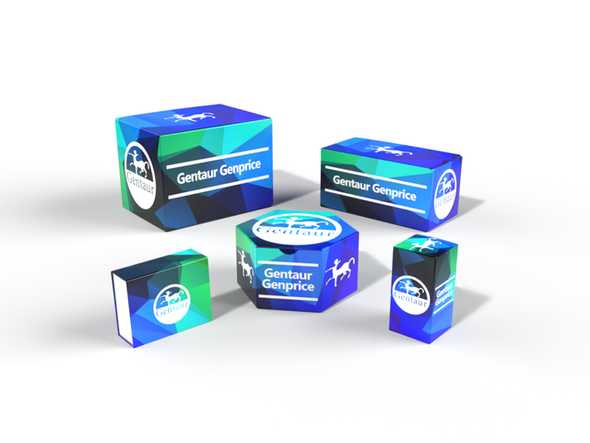Description
LIGHT Antibody [7B9F12] | RF16061 | Gentaur UK, US & Europe Distribution
Host: Mouse
Reactivity: Human
Homology: N/A
Immunogen: LIGHT antibody was raised against the extracellular domain of human LIGHT.
Research Area: Immunology
Tested Application: E, WB, IHC-P, ICC, IF, Flow
Application: LIGHT antibody can be used for detection of CD80 by Western blot at 0.5 - 1 μg/mL. LIGHT antibody can be used for immunohistochemistry starting at 2 - 5 μg/mL. For immunofluorescence start at 20 μg/mL.
Antibody validated: Western Blot in human samples; Immunohistochemistry in human samples; Immunocytochemistry in human samples; Immunofluorescence in human samples and Flow Cytometry in mouse samples. All other applications and species not yet tested.
Specificiy: N/A
Positive Control 1: Cat. No. 1331 - Human Lymphoma Tissue Lysate
Positive Control 2: N/A
Positive Control 3: N/A
Positive Control 4: N/A
Positive Control 5: N/A
Positive Control 6: N/A
Molecular Weight: Predicted: 26 kDa
Validation: N/A
Isoform: N/A
Purification: LIGHT Antibody is supplied as protein A purified IgG2b.
Clonality: Monoclonal
Clone: 7B9F12
Isotype: IgG2b
Conjugate: Unconjugated
Physical State: Liquid
Buffer: LIGHT Antibody is supplied in PBS containing 0.02% sodium azide and 50% glycerol.
Concentration: 1 mg/mL
Storage Condition: LIGHT antibody can be stored at 4˚C for three months and -20˚C, stable for up to one year. As with all antibodies care should be taken to avoid repeated freeze thaw cycles. Antibodies should not be exposed to prolonged high temperatures.
Alternate Name: LIGHT Antibody: TNFSF14, LTg, CD258, HVEML, HVEM ligand
User Note: Optimal dilutions for each application to be determined by the researcher.
BACKGROUND: LIGHT Antibody: LIGHT, also known as Tumor Necrosis Factor Superfamily member 14 (TNFSF14) , is a co-stimulatory molecule that can regulate T-cell activation (1) and has recently been identified as an immune checkpoint protein. LIGHT binds to two different receptors, Herpes Virus Entry Mediator (HVEM) and Lymphotoxin beta Receptor (LTβR) . While LIGHT binding to HVEM delivers a co-stimulatory signal to T cells (1) , LIGHT binding to LTβR is critical for the formation of lymphoid structures which can stimulate T cell infiltration and activation of a tumor microenvironment, leading to rapid T cell-mediated tissue destruction (2) . It has been shown that targeted delivery of LIGHT to tumors, thereby causing the T cell infiltration of the tumor, can enhance the response of the PD-1/PD-L1 checkpoint blockade anti-cancer therapy (3) , suggesting that LIGHT may become a potent tool in anti-cancer treatment.

![LIGHT Antibody [7B9F12] LIGHT Antibody [7B9F12]](https://cdn11.bigcommerce.com/s-1rdwiq712m/images/stencil/608x608/products/460919/466748/gentaur-genprice__26005.1661610467__29809.1661628092__75433.1661676199__77988.1661684280__64362.1661692443__02085.1662049603__45075.1662119302__91744.1662191540__21580.1662291419__54067.1663494816.png?c=1)



![LIGHT Antibody [7B9H9] LIGHT Antibody [7B9H9]](https://cdn11.bigcommerce.com/s-1rdwiq712m/images/stencil/590x590/products/460920/466749/gentaur-genprice__26005.1661610467__29809.1661628092__75433.1661676199__77988.1661684280__64362.1661692443__02085.1662049603__45075.1662119302__91744.1662191540__21580.1662291419__19696.1663494816.png?c=1)
